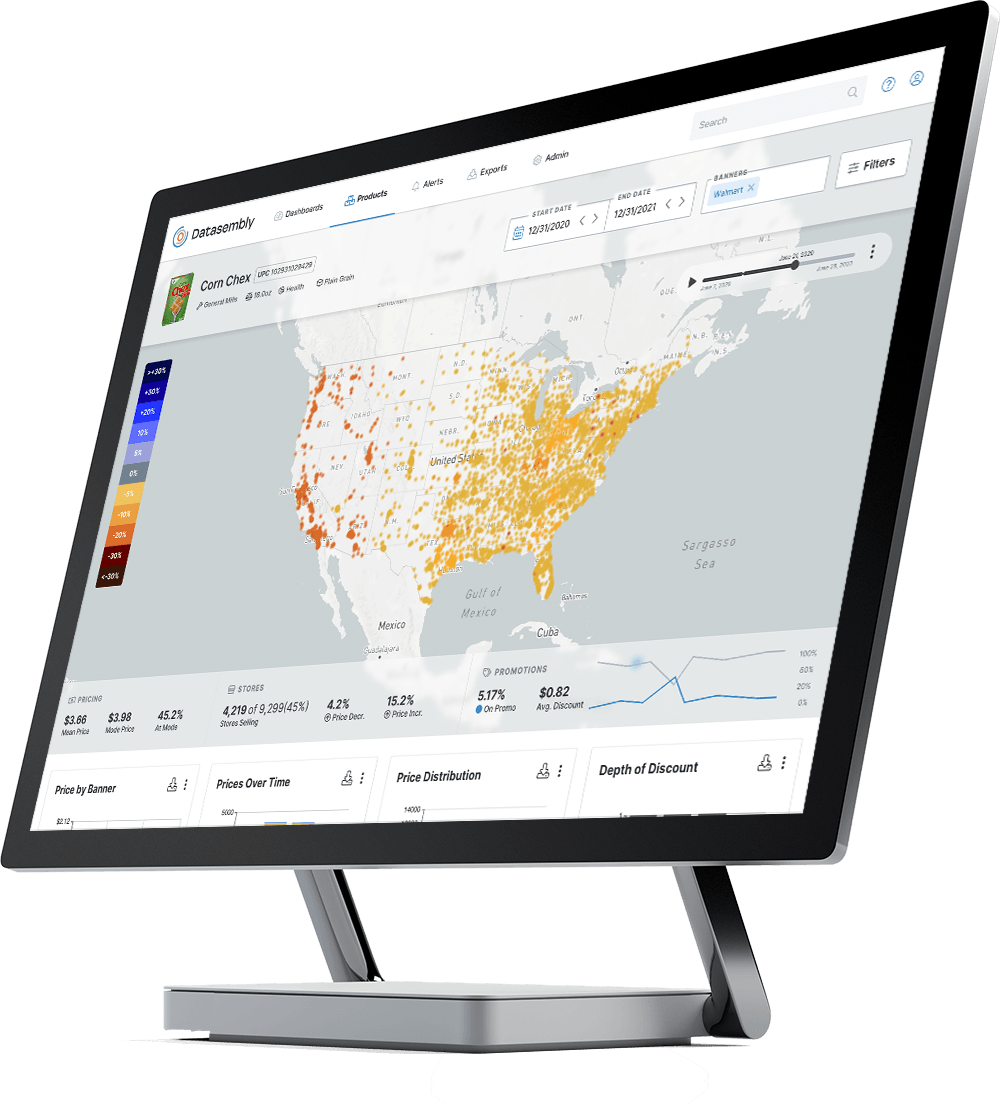AHA! Insight
Datasembly’s real-time hyper-local data allowed the large cereal manufacturer to validate within weeks that key items were getting significant pricing moves across a broad-base of stores and geographies/ markets, and more importantly, could share this information with other key retailers in the US. The ability to share real-time information across retailers validated that the market had moved and provided the confidence needed to ensure their partners that the new prices would hold. These changes allowed retailers to move faster, resulting in +500k in total sales gains in the first 10 weeks from key retailers with projected sales gain of $2.7M for just the 2 retailers who moved on price 8-10 weeks faster then rest of market.
